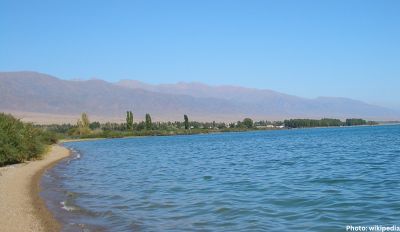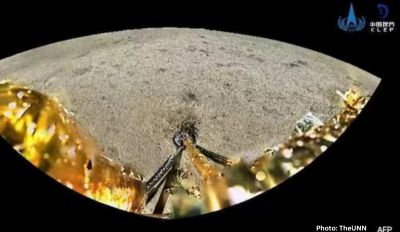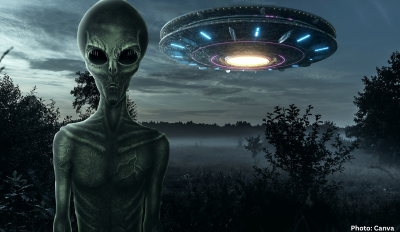NASA’s Jet Propulsion Laboratory (JPL) has released a stunning postcard image of “Marker Band Valley” on Mars. The image shows two parts of the same day on the red planet; the panorama on the left is from 9.20 AM local Mars time whilst the one on the right is from 3.40 PM the same day. The image is a composite of two black and white panoramas taken by Curiosity’s navigation cameras. Additional colour was added to create a more artistic aesthetic, including blue for the part taken in the morning and red for the afternoon picture. The two images were taken to provide contrast to make the details stand out. The photo was taken on April 8, 2017 when the rover was in the foothills of Mount Sharp in the Gale Crater, an area it has been exploring since it landed in 2012.
The Marker Band Valley is a sulphate bearing region featuring unexpected signs of an ancient lake. From a distance, the valley is visible as well as two hills known as Bolivar and Deepdale. Curiosity engineer, Doug Ellison, said “capturing two times of day provides dark shadows because the lighting is coming in from the left and the right, like you might have on a stage – but instead of stage lights, we’re relying on the Sun.”
Although the two panoramas provide the main attraction, there are other features in the image. Since the camera was looking past the backside of the rover, parts of the rover itself is visible in the picture. There were three antennas and the rover’s nuclear power source, Radioisotope thermoelectric generator clearly visible. Additionally, the Radiations Assessment Detector in the image is designed to measure radiation levels on the planet. The data collected will be analyzed to determine how future astronauts can be protected from radiation during long-duration missions.
NASA’s Curiosity rover has been exploring Mars for more than five years, the longest duration of any Martian rover to date. Although Curiosity was not specifically designed to search for any indication of past or present life on the Red Planet, it is still an important mission. The data is critically important for understanding Mars and planning for future manned missions to the planet. Despite its longevity, Curiosity’s engineers are still discovering ways to explore and bring new information back to Earth.
As stated earlier, Curiosity’s target is to spend two Martian years exploring the Gale Crater area and then move to an area where there may be fresh mineral deposits. Meanwhile, NASA is preparing to send more rovers and drones to Mars to further investigate the Red Planet before manned missions are launched. With other space agencies such as SpaceX and Blue Origin also planning trips to Mars, the planet appears to be the next big endeavour of the space race.











